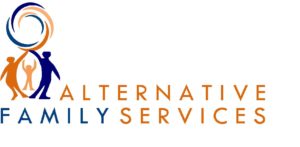Understanding the Safe and Sound Protocol: A Path to Healing and Connection
At Alternative Family Services (AFS), we are dedicated to providing the most effective, evidence-based practices (EBPs) to support the children, youth, and families in our care. One such innovative approach is the Safe and Sound Protocol (SSP), a therapeutic intervention designed to promote emotional regulation, resilience, and social engagement. In this post, we’ll explore what SSP is, how it works, and its critical role in supporting mental health and trauma recovery.

At AFS, every child, teen, and family we serve has faced the challenges that brought them into the child welfare system. Using evidence-based practices like SSP, we help these individuals rebuild a sense of safety, trust, and hope, empowering them to heal and thrive.
What Is the Safe and Sound Protocol?
Developed by Dr. Stephen Porges, the creator of the Polyvagal Theory, SSP is a non-invasive, sound-based treatment that helps regulate the nervous system. By calming the body’s fight-or-flight responses, SSP allows individuals to feel safer, more connected, and better able to engage with the world around them.
At its core, SSP uses specially filtered music to stimulate and regulate the vagus nerve, a key part of the autonomic nervous system that influences emotional and physiological responses. Through a series of listening sessions, typically totaling 5–10 hours, SSP helps “reset” the nervous system, shifting individuals from states of hyperarousal (fight-or-flight) or hypoarousal (shutdown) into a balanced state of safety and connection.
How Does the Safe and Sound Protocol Work?
SSP follows four structured steps:
- Assessment: A trained provider evaluates the individual’s needs and readiness for SSP, tailoring the approach to their specific challenges and goals.
- Preparation: The provider ensures a comfortable and distraction-free listening environment, explaining the process to foster trust and understanding.
- Listening Sessions: The individual listens to filtered music tracks designed to stimulate the middle ear muscles and the ventral vagal complex. Sessions typically last 30–60 minutes and are spaced over several days or weeks.
- Integration: Following the sessions, the individual works with the provider to process and integrate the experience, often combining SSP with complementary therapies like talk therapy, mindfulness, or occupational therapy.
Who Can Benefit from the Safe and Sound Protocol?
SSP is effective for a wide range of individuals, including:
- Children with Autism Spectrum Disorder (ASD): Improves auditory processing, reduces sensory sensitivities, and enhances social engagement.
- Trauma Survivors and Individuals with PTSD: Helps recalibrate the nervous system, reducing symptoms like hypervigilance and anxiety.
- People with Anxiety or Depression: Promotes a sense of safety and emotional regulation, alleviating symptoms of distress.
- Those with Sensory Processing Challenges: Increases tolerance to sensory stimuli, reducing overwhelm in daily environments.
For individuals who find traditional talk therapy overwhelming or ineffective, SSP offers a powerful alternative that works through the nervous system rather than verbal communication.
Benefits of the Safe and Sound Protocol
SSP delivers measurable benefits for individuals facing diverse challenges:
- Improved Emotional Regulation: Reduces nervous system reactivity, helping individuals manage their emotions more effectively.
- Enhanced Social Engagement: It fosters feelings of safety, making it easier to connect with others and engage in meaningful interactions. A small-scale study conducted by researchers in Japan in 2023 found that, while not a cure, “SSP led to an improvement in the social awareness” of the study’s participants.
- Reduced Anxiety and Stress: Calms the nervous system, alleviating symptoms of panic and chronic stress.
- Greater Tolerance to Sensory Input: Supports individuals in processing sensory stimuli without becoming overwhelmed. A 2014 study led by Dr. Stephen W Porges found that polyvagal theory could be successfully applied to reduce auditory hypersensitivities for people with ASD. And a 2023 study highlighted “SSP as a promising intervention to reduce sensory sensitivities, digestive problems, and selective eating in individuals with ASD.
- Trauma Recovery Support: Provides a gentle and effective way to address the physiological effects of trauma, helping individuals feel safer in their bodies.
Challenges and Considerations
While SSP offers promising results, it is not a standalone cure. It works best as part of a broader therapeutic plan that may include talk therapy, medication, or other interventions. As their nervous systems adjust, individuals may experience temporary discomfort or heightened emotions, which providers manage through careful pacing and support.
Geographic and financial barriers can also limit access to SSP, as the protocol requires trained professionals to deliver it. However, its effectiveness makes it a valuable tool in addressing complex challenges.
SSP and Foster Youth
The need for interventions like SSP is particularly critical for foster youth. While approximately 1 in 5 youth nationwide experience mental health challenges, the rate among foster youth is 4 out of 5, often stemming from significant trauma. These young people are more likely to face PTSD and other mental health conditions compared to their peers.
At AFS, every child, teen, and family we serve has faced the challenges that brought them into the child welfare system. Using evidence-based practices like SSP, we help these individuals rebuild a sense of safety, trust, and hope, empowering them to heal and thrive.
Learn More
The Safe and Sound Protocol is just one example of the innovative, research-backed approaches we employ at AFS to meet the diverse needs of our community. To learn more about our mental health services, visit www.afs4kids.org/services/mental-health-services/.
Together, we can nurture resilience, promote healing, and create brighter futures for the youth and families in our care.
